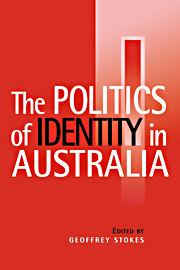Introduction
Published online by Cambridge University Press: 05 June 2012
Summary
We suffer unmistakably, though our land is so ancient, from a most uncomfortable sense of newness. Oral legend and wonderful stories of bygone days serve to refine the imagination of the poorer classes in the old countries and to cultivate their hearts, but the lower classes in Victoria have no such resource.
(Ouerin 1886)This recurrent anxiety to discover and affirm what it is to be an Australian – to define a distinctive national ethos and type – to set up Australianity as an identifiable quality and merit – reminds us that Australia is largely a nineteenth century creation, and therefore congenitally diseased with nationalism, that ‘doctrine invented in Europe at the beginning of the nineteenth century’ to the infinite harm and confusion of mankind.
(McAuley 1962: 122)Issues of identity – being clear about our identity and culture – are an important part of how we as a nation will behave and present ourselves in the 90s.
(Keating 1994a)National identity develops in an organic way over time. It may be changed by cataclysmic events like Gallipoli. But government and their social engineers should not try to manipulate it, or to create a sense of crisis about identity. Constant debate about identity implies that we don't already have one or, worse, that it is somehow inadequate.
(Howard 1995a, 1995b: 3)Australian cultural nationalists have long pursued the task of discovering, or indeed creating, a distinctive Australian character, ethos, or tradition.
- Type
- Chapter
- Information
- The Politics of Identity in Australia , pp. 1 - 20Publisher: Cambridge University PressPrint publication year: 1997
- 9
- Cited by

